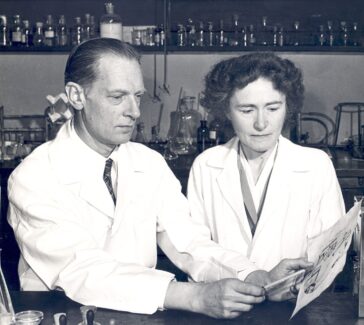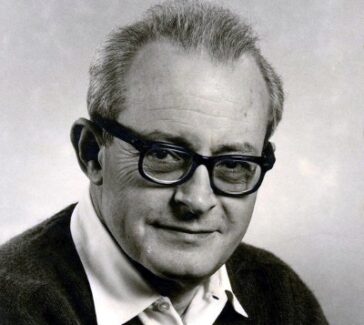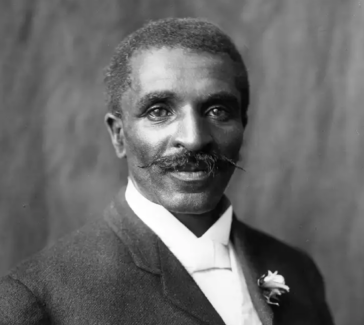Maxine Singer
Singer helped decipher the human genetic code—the chemical language that DNA uses to create the proteins that keep our bodies going and growing. One of her special concerns was recombinant DNA technology.
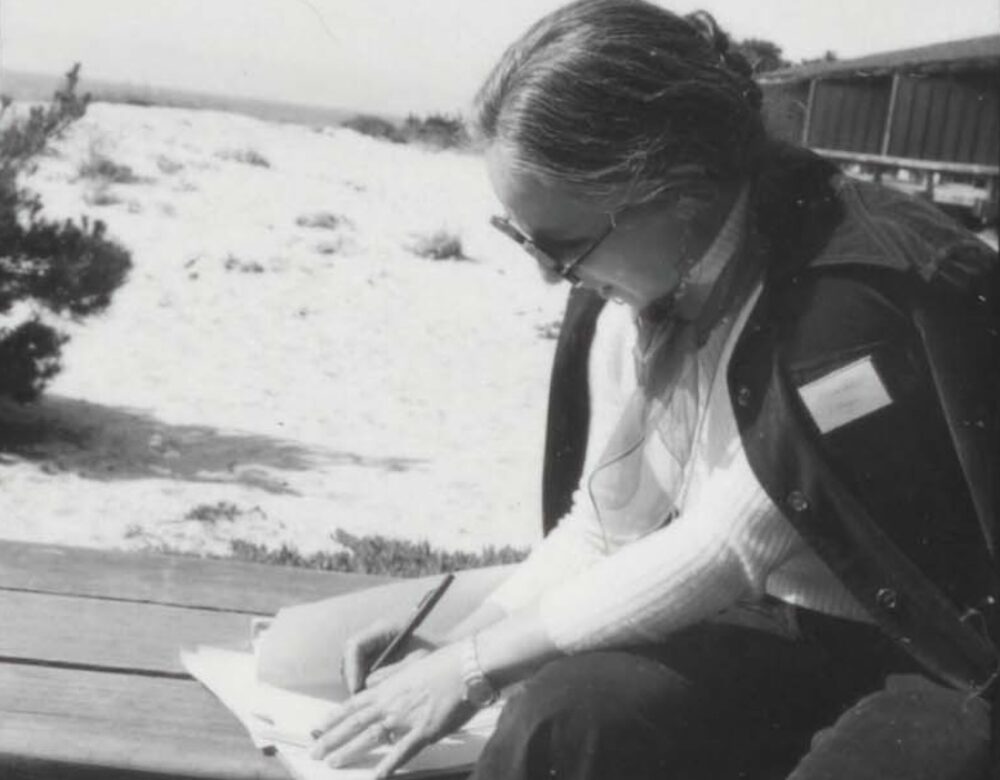
DNA, the molecule that carries all the genetic information for living things, had always been the focus of Maxine Singer’s research. Singer (1931–2024) studied disease-related genes that actually jump from place to place in DNA.
Singer grew up in New York City and was inspired to go into science by her high school chemistry teacher: “She wasn’t very friendly, but she was a very good teacher,” Singer said of her in an interview.
Swarthmore: Treated as an Equal
Singer got further encouragement when she attended Swarthmore College, just outside Philadelphia, where she initially majored in chemistry but switched to biology. During the late 1940s and early 1950s, the world of science was not especially welcoming to women, whether it was in academia or in industry. Things were different at Swarthmore. Singer had many women friends who were also science majors, and she recalled that they were treated as equals by both the faculty and their male classmates.
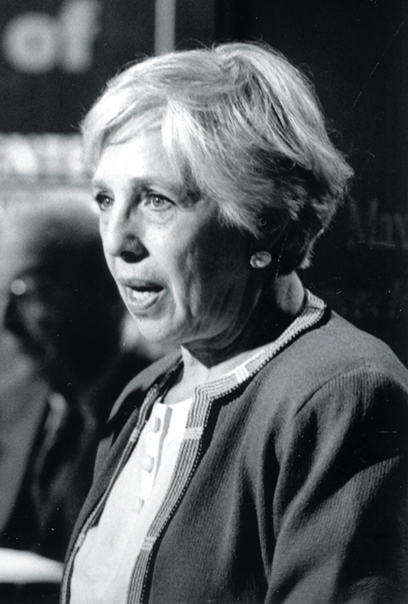
Deciphering the Genetic Code
After graduating from Swarthmore in 1952, she entered Yale University where she earned a PhD in biochemistry in 1957. This was just four years after James Watson and Francis Crick discovered the double-helical structure of DNA. Singer’s professor at Yale advised her that the future of biochemistry was in nucleic acids—DNA and RNA—and that she should study them. Very few scientists in the United States were studying nucleic acids at that time.
One of those few was Leon Heppel of the National Institute of Arthritis, Metabolism, and Digestive Diseases at the National Institutes of Health (NIH) in Washington, D.C. Singer’s professor helped her get a job with Heppel as a postdoctoral researcher. This position worked out well because her husband, a lawyer, had also found work in Washington. Though Singer intended to stay only a short time, her postdoc position evolved into a full-time senior research position, and she ended up staying at NIH until 1979. She then moved to the National Cancer Institute, where she stayed until she became president of the Carnegie Institution in 1988, a post she held through 2002.
As a young scientist at the NIH in the 1960s, Singer played an important role in experiments being conducted by Heppel, Marshall Nirenberg, and others trying to determine exactly how RNA transferred genetic information from DNA in the cell nucleus to the site of protein synthesis in the cell’s protoplasm.
They used RNA molecules, with specific predetermined base sequences made from adenine (A), guanine (G), cytosine (C), and uracil (U)—for example, all uracil—to determine what proteins such RNAs would make from solutions of free amino acids, the chemical components of proteins. By matching each amino acid to a particular triplet of RNA bases, these scientists wrote the dictionary of three-letter words in which the genetic code is written. Singer had the job of constructing the experimental RNAs using a special enzyme to string together the required components.
The Role of LINEs in Genetic Diseases
Singer continued as a highly productive scientist at the NIH, taking on managerial duties as well. Her most important discovery since her contribution toward deciphering the genetic code came in the 1980s while she was heading up the Laboratory of Biochemistry at the National Cancer Institute. She had become interested in stretches of mammalian DNA that are repeated thousands of times and interspersed on the genomes of all mammals. She discovered that these long interspersed nucleotide elements (LINEs) are capable of transposition on the genome and the mechanism by which this happens. Her hypothesis that these transpositions play an important role in genetic diseases was confirmed by other scientists.
Ethics, Education, and Recognition
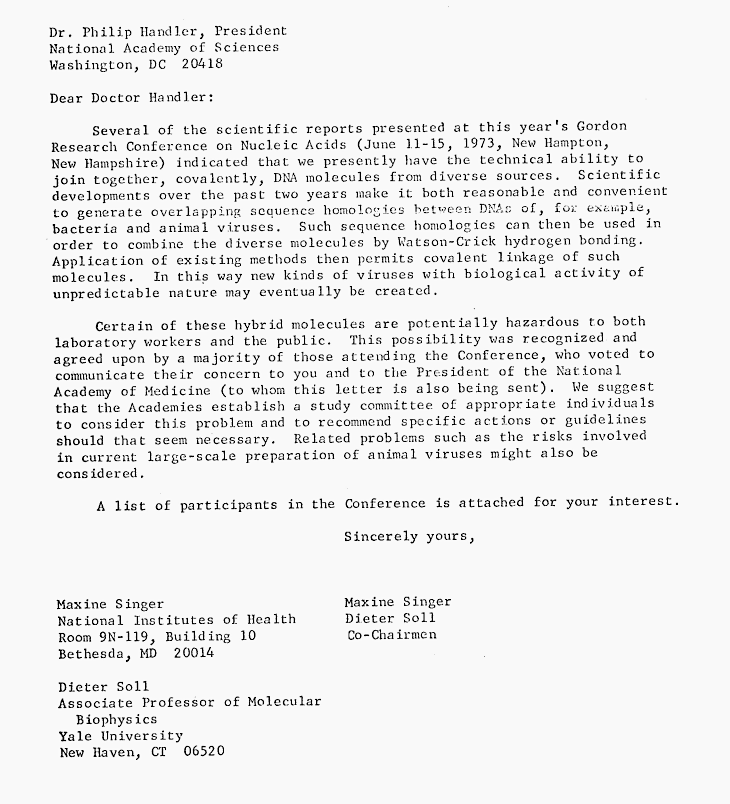
Research on recombinant DNA started to take shape in 1970. By 1973, the promise and safety of recombinant research were on the agenda of the Gordon Research Conference. Singer, who co-organized the conference, was both open to this technology and sensitive to concerns about its safety for human health. She organized a debate on the subject, which made it clear that many scientists were alarmed.
As she later said, “I was one of the people who made the matter public and asked the National Academy of Sciences to undertake investigation of people’s concerns about those experiments.” Her letter to the Academy was published in Science later that year. Concerns about recombinant DNA, voiced by the scientists who created and used the techniques, gradually reached broader and broader audiences.
Eventually, these concerns led to the International Conference on Recombinant DNA Molecules—also known as the Asilomar Conference—in 1975. Singer co-organized the meeting with an international team of researchers. Their goal was to explore the ethical risks of recombinant DNA research and to come to consensus about whether, and if so how, research should proceed. Singer put together a legal panel at the conference, expanding the debate beyond the scientific community. Later, at the NIH, she helped formulate the institute’s guidelines about how research in genetic engineering should be carried out.
Singer spent her career as a scientist and public advocate but was also heavily involved in programs to improve the quality of science education at all levels, from kindergarten to postdoctoral study. She wrote several books on genetics with her colleague Paul Berg and received numerous professional awards, including the National Medal of Science. Singer delivered the 1992 Ullyot Public Affairs Lecture titled “Genes, Genomes, and Disease.”
Further Reading
Luis Campos, “Invoking Asilomar: The Historic Meeting’s Legacy Resists Simple Lessons.” Science (January 31, 2025).
Michael Rogers, “The Pandora’s Box Congress.” Rolling Stone 189 (1975): 37-40, 42, 74, 77-78, 82.
Maxine Singer, “Beyond Bias and Barriers.” Science (November 10, 2006).
Maxine Singer, Blossoms: And the Genes That Make Them. Oxford University Press, 2018.
You might also like
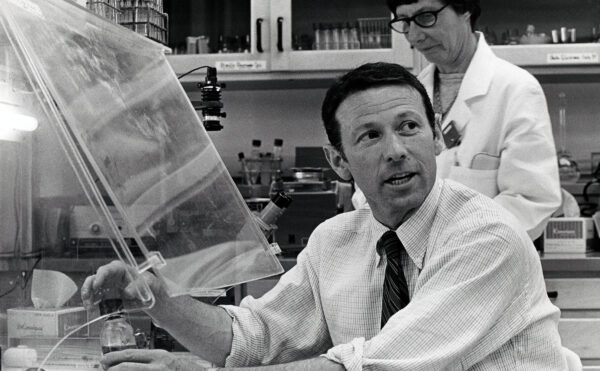
DISTILLATIONS MAGAZINE
An Absolute Good?
Paul Berg, controversy, and the engineering of life.

EVENTS
The Spirit of Asilomar and the Future of Biotechnology
Experts will gather to reflect on the last 50 years since the 1975 Asilomar Conference on Recombinant DNA.

DISTILLATIONS PODCAST
Science, Interrupted
The story of the 1975 Asilomar Conference on Recombinant DNA.

